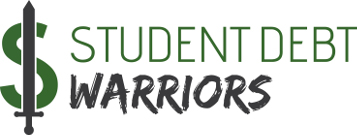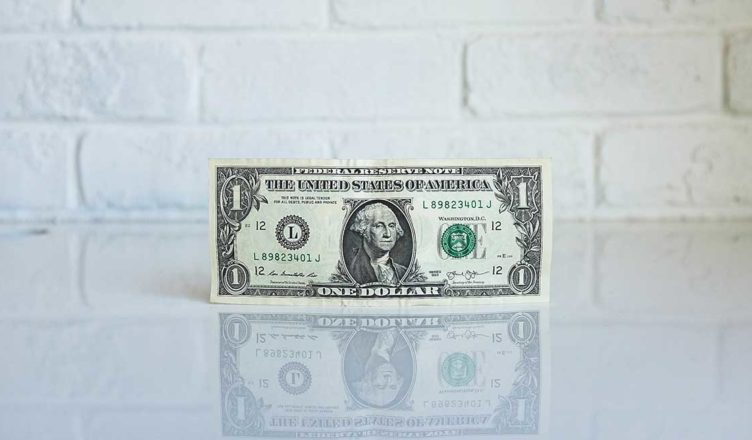Anyone who has ever had to rely on a mix of both private student loans and federal student loans in order to afford college is bound to tell you one thing: Private student loans are expensive! Especially when compared to their federal counterparts.
While Federal Direct Loans are currently charging rates of 5.05% for undergraduate students, 6.60% for graduate students, and 6.31% for PLUS loans (for both parents and graduate students), student loans from private lenders can carry interest rates anywhere from 8–12% (or higher!). That’s nearing the same interest rates as what’s charged by some of the cheaper credit cards!
But many borrowers never stop to wonder why, exactly, private student loans typically carry higher interest rates. They simply chalk up the higher cost to their lender’s greed and call it a day.
Need help keeping track of your student loans? Download our free Student Loan Spreadsheet!
Though greed certainly plays a role in pushing private student loan interest rates so high, it would be ingenuous to say that that is the only factor. The truth is, there are a number of reasons that private student loans are generally more expensive than federal student loans. Here, we explore those reasons.
Reasons Why Private Student Loans are More Expensive Than Federal Student Loans
1. Private lenders need to make money.
Private lenders—whether they are big national banks or smaller regional or community banks—lend money for one simple reason: To generate a profit for their owners and investors. If they failed to generate a profit, then their investors would flee, and their companies would instantly lose a lot of value. This need to generate profit impacts nearly everything that private lenders do: Including who they will lend to and what the interest rates they charge, ultimately, will be.
This is drastically different from how the federal government lends. Though the federal government makes some money off of the student loans that it lends, profit isn’t the primary motivator. The federal government is in the business of lending student loans because education is a public good: An educated workforce makes for a strong economy and country. Because the federal government isn’t trying to make money, but simply to cover the cost of lending, they are able to charge much lower interest rates than private lenders.
2. There’s a market for private student loans.
Private lenders are only able to charge what they charge because people have shown that they are willing to pay the price. If borrowers en masse decided that they were unwilling to pay interest rates this high, then private lenders would be forced to lower what they charge or else risk missing out on business. Similarly, if new lenders move into the market and offer student loans at lower interest rates, they would begin stealing customers away from the lenders who have higher rates. In order to stop hemorrhaging customers, these lenders would likely need to lower their own interest rates in order to stay competitive.
3. Private lenders need to consider risk more than the federal government.
Whether you are applying for a student loan, a mortgage, a personal loan, or a credit card, the interest rates that you pay are determined by a large number of factors. One of the most important factor is how risky you, as a borrower, are to do business with.
Borrowers who are seen as less likely to be able to repay a loan are considered high risk, and are generally charged a higher interest rate for their loan in order to make up for this risk. Those who are considered more likely to be able to repay a loan are considered low risk, and are generally charged lower interest rates.
But how do lenders determine risk?
The primary way that lenders assess risk is by looking at the credit score and credit report of potential borrowers. These reports look at a number of factors (including your payment history, your total debt levels, the length of your credit history, etc.) in order to determine whether you are likely to repay your loan successfully or not.
Unfortunately, high school graduates and college students right out of high school typically don’t have much, if any, credit history. This means that lenders can’t look at your past behavior in order to get a sense of how risky you are to do business with. And if they can’t determine how risky you are as a borrower, then they are of course going to default assume that you are risky for them. They need to cover their asses, after all. These higher interest rates are charged across the board in order to make up for the borrowers who ultimately fail to repay their loans.
4. Private student loans are unsecured debt.
Usually, when a lender gives you a loan, it is so that you will be able to buy a certain thing. A mortgage is given to you so you can buy a house; a car loan is given to you so you can buy a car. In these cases, when you sign your loan agreement, the object that you are purchasing with the loan becomes collateral for the loan. So if, for example, at any point you are unable to repay your mortgage, your lender can confiscate your home, sell it, and use the funds to pay off the balance of your mortgage loan. (Same goes for car loans, etc.) The ability to confiscate your assets reduces the lender’s risk, allowing them to lower the interest rates that they charge you.
Student loans (and credit cards) are different in that there is no collateral for a lender to confiscate in the event that you can’t repay. This makes student loans “unsecured debt” which s riskier than debt that has assets tied to it. Because the lender has increased risk, they must charge higher interest rates to make up for it.
Editor’s Note: This isn’t to say that you can just decide to not pay back your loans. Id you do so, you private lender can sue you, which will have a lot of nasty side effects. Your credit will be wrecked, your wages can be garnished, and you may ultimately have assets seized from you to cover the debt.
How Students Can Lower Their Private Student Loan Interest Rates
Ultimately, the interest rates that your private student loans carry will depend on a number of factors, some of which are in your control and some of which are not. It may be possible to lower your interest rates, though, by taking some of these steps:
- Apply with a cosigner: Because most high school graduates don’t yet have a credit history, lenders don’t really have a way of determining how much risk you, as a borrower, present. And because they don’t know how much risk you present, they’re going to assume that you present a lot of risk and charge you a higher interest rate on your private student loans. By applying for a private student loan with a cosigner who has a good or excellent credit score and a healthy debt-to-income ratio, it may be possible to lower your interest rates because your lender knows that they will be able to turn to your cosigner if you are unable to pay.
- Improve your credit score: Like we said above, many high school graduates have little to no credit history, which makes them risky for lenders to do business with. But many people don’t go to college right after high school: They go after taking a few years off. If this describes you, then you’ve most likely accrued at least some kind of credit history—substantially more than most high school students, anyway. So before applying for student loans, do everything you can to make sure that your credit score is healthy. Pay down large debts, make sure that you are never late on payments, and dispute any negative marks that shouldn’t be on your account. Only then, when your score is as high as possible, should you apply for your loans.
- Shop around: No two private student loan lenders will ever offer exactly the same rates, so it’s in your best interest to shop around to make sure you find the best rate possible. Often the lowest rate will come from large national lenders, who have more resourced to rely on. But it is also possible to find good rates from smaller local or regional lenders as well. The only way that you’ll know for sure that you’ve gotten as low a rate as possible is by shopping around.






